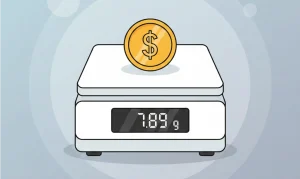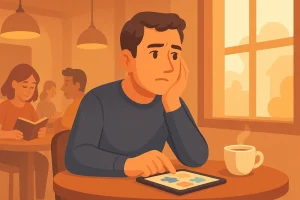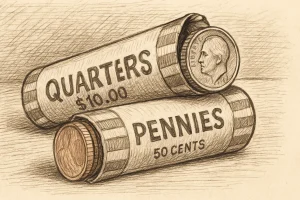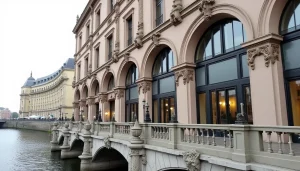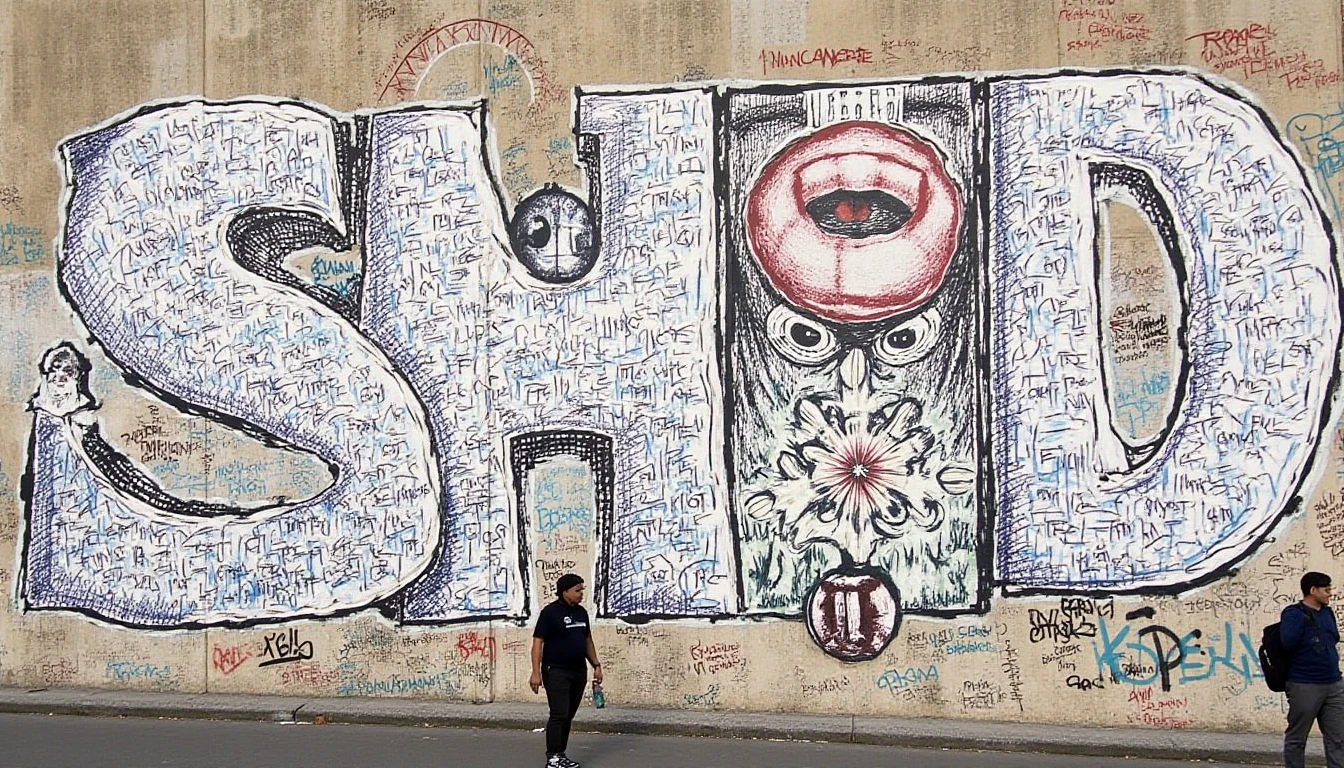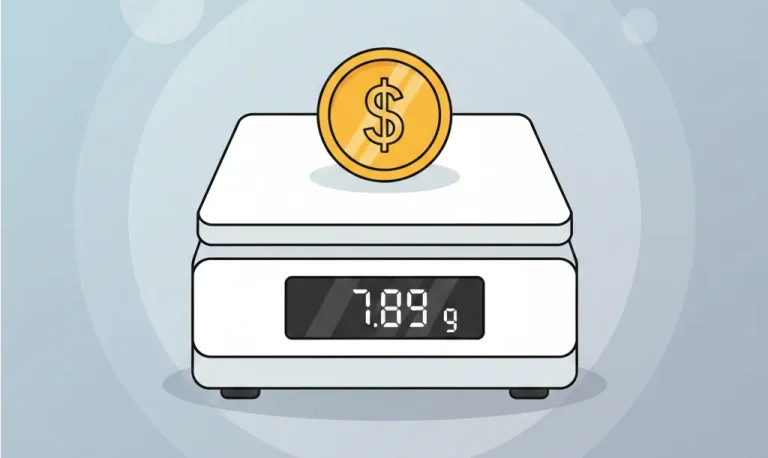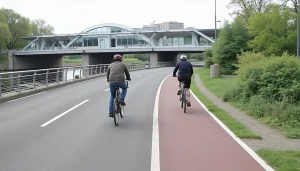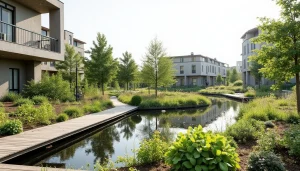The Birth of Graffiti
The origins of street art in Riverside-Mitte are deeply rooted in the city’s history of urban decay and transformation. In the mid-20th century, Berlin was a divided city, with its eastern half under Soviet control and its western side a haven for Allied occupation. This stark division influenced the birth of graffiti as an expressive outlet for discontent, rebellion, and identity. The walls of Riverside-Mitte became canvases where young artists could voice their thoughts and frustrations, often targeting areas that were neglected or abandoned.
Graffiti in its earliest form was a raw, unrefined expression, primarily executed by marginalized groups who sought to leave their mark on the city’s fabric. It began as an act of defiance against authority and societal norms, with tags and wildstyles adorning railway yards, bridges, and underpasses. These early graffiti artists were not just about leaving their names; they were making a statement about living in a divided city where freedom was conditional. The anonymity provided by street art allowed these individuals to assert their presence without fear of reprisal.
As the 1970s rolled into the ’80s, Riverside-Mitte saw a surge in graffiti activity that paralleled global trends. Artists like CORNBREAD and TAKI 183 from New York City inspired young Berliners to adopt similar techniques. The influence of hip-hop culture further fueled this movement, bringing with it not just music but also dance and visual arts. This era marked the beginning of a community-driven art form that was more than just vandalism; it was an aesthetic revolution. Graffiti evolved from mere tagging into complex murals that told stories about life in Berlin’s urban landscape.
Transition to Street Art
The transformation from graffiti to street art began with a subtle shift in attitude and technique, as artists in Riverside-Mitte started moving beyond simple tags and wildstyles towards more intricate designs and narratives. This transition was not just an aesthetic change but also one of purpose; these artists sought to elevate their work from mere illegal acts into legitimate forms of expression. By the early 1990s, street art had become a medium for social commentary and personal narrative, reflecting the complex realities of life in post-reunification Berlin.
One pivotal factor that contributed to this transition was the physical environment itself. As Riverside-Mitte underwent significant urban renewal projects in the years following reunification, artists found new spaces to experiment with their craft. Abandoned buildings, railway bridges, and industrial wastelands became canvases for murals that were both beautiful and thought-provoking. This shift towards more structured compositions and storytelling through art was also influenced by international movements, particularly from cities like London and São Paulo where street artists had already started blurring the lines between graffiti and fine art.
The evolution of tools and techniques played a crucial role in this transition as well. Spray cans were replaced with brushes, rollers, stencils, and even 3D installations, allowing for more detailed and complex works. Artists began incorporating elements such as street signs, shadows, reflections, and light to create illusions that engaged viewers on multiple levels. This period also saw the rise of collaborations between street artists and local communities, resulting in murals that resonated with the area’s residents and tourists alike.

Emergence of Recognized Street Art
By the late 1990s, Riverside-Mitte had become a hub for emerging street art talent, attracting international attention. The city’s cultural renaissance provided fertile ground for artists who sought to transform urban landscapes into dynamic galleries. This era marked a significant shift as street art moved from being viewed solely as vandalism to becoming recognized as an integral part of the area’s artistic heritage.
One key development was the establishment of legal spaces where artists could showcase their work without fear of repercussions. Initiatives such as “Street Art Berlin” and public murals commissioned by city authorities allowed for a more controlled environment where creativity could flourish. This move helped legitimize street art within the broader cultural context, encouraging both established and emerging talents to participate in this new medium.
The recognition came not only from local communities but also from international audiences. Riverside-Mitte began hosting annual festivals dedicated solely to street art, inviting global artists to contribute their works. These events brought together diverse styles and techniques under one roof, creating a vibrant scene that celebrated both the past and future of urban expression. The presence of renowned figures like Banksy in Berlin further elevated the status of street art globally, making it a significant cultural export for the city.
Contemporary Street Art Installations
In contemporary Riverside-Mitte, street art has transcended traditional boundaries, evolving into intricate installations that challenge perceptions of space and time. Artists today are not just content with painting walls; they are creating immersive environments that engage viewers on multiple sensory levels. This transformation reflects a broader shift in urban art towards more interactive and participatory forms.
One notable example is the “Streets of Tomorrow” project, which invites artists to reimagine public spaces as dynamic platforms for creative expression. These installations often incorporate augmented reality (AR) technology, allowing spectators to experience additional layers of content through their smartphones or dedicated AR apps. This blend of physical and digital art challenges traditional notions of permanence and accessibility, making street art more inclusive than ever before.
Contemporary artists in Riverside-Mitte are also experimenting with new materials beyond the conventional spray paint and stencil. From recycled objects and natural elements to cutting-edge technologies like 3D printing, these installations push the boundaries of what is possible within public spaces. One such installation featured a series of interconnected structures made from reclaimed wood, transforming an abandoned lot into a temporary forest that invited visitors to walk through its winding paths.
The integration of digital media has also played a crucial role in shaping modern street art installations. Interactive projections and soundscapes bring life to static murals, turning them into multi-sensory experiences. For instance, the “Echoes of Riverside” project utilized motion sensors to activate audio tracks embedded within painted figures on walls, creating an immersive narrative that changed based on viewer interaction.
Legacy and Future Prospects
The legacy of street art in Riverside-Mitte is undeniable; it has not only transformed the urban landscape but also left a lasting impact on Berlin’s cultural identity. From its humble beginnings as graffiti to becoming a recognized form of expression, street art continues to evolve, reflecting societal changes while maintaining its roots in rebellion and creativity.
Street art has become an integral part of Riverside-Mitte’s tourism industry, attracting visitors who are drawn not just by the city’s history but also by its vibrant contemporary scene. Museums like the Urban Spree Gallery have emerged as hubs for street artists to exhibit their work legally, providing platforms for both established names and emerging talents. This shift towards institutional recognition underscores how far street art has come from being merely an underground movement.
Looking ahead, the future prospects of street art in Riverside-Mitte are promising yet uncertain. With increasing pressure on public spaces due to urban development projects, there is a growing need for balanced integration between artistic expression and city planning. Efforts must be made to ensure that these vital cultural spaces remain accessible and inclusive for all community members. Furthermore, as digital technology continues to advance, street art will likely explore even more innovative ways to engage audiences, potentially pushing the boundaries of what it means to create in public space.
The ongoing dialogue between artists, policymakers, and residents is crucial in shaping this future landscape. By fostering an environment where creativity can thrive alongside urban development, Riverside-Mitte stands poised not only as a cultural pioneer but also as a model for how cities can embrace street art as part of their enduring legacy.

